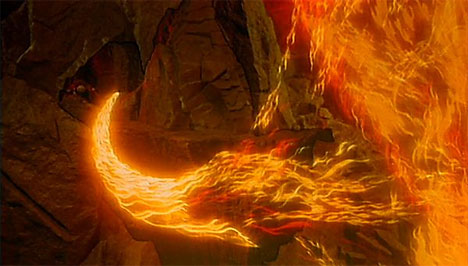The Devil in Heaven

The Divine Council in the Book of Job
An excerpt from Christopher D. Kou, “A Biblical Theology of the Divine Council,” Theopolis Institute, March 2017.

An excerpt from Christopher D. Kou, “A Biblical Theology of the Divine Council,” Theopolis Institute, March 2017.

With the inheritance of Canaan and the dividing up of this priestly territory among the tribes, Israel became a microcosm of the nations of the world.
Why are there four Gospels? There would be so much less confusion — and theological spade work — if there were just the one. The most obvious answer is that each one was written for a different audience, as described here. The least obvious answer is that God was not only writing the commandments in human flesh, He was also “measuring out” the architecture of the Tabernacle in humanity.
 Structure of Psalm 91, with comments on Matthew 4:6
Structure of Psalm 91, with comments on Matthew 4:6For the tools to make sense of the parsing below, get the Bible Matrix books. Book 1 describes the sevenfold Creation pattern. Book 2 describes the fivefold Covenant pattern from which the sevenfold pattern is derived (and how both of them are derived from the threefold Trinity).
T R A N S C E N D E N C E
Strangely, the RSV does a better job of the flow on this one than the NKJV or ESV. Here is where literary structure helps translation of Hebrew! Line 5 does not begin a new sentence.
 “When Paul had gathered a bundle of sticks and put them on the fire, a viper came out because of the heat and fastened on his hand.” (Acts 28:3)
“When Paul had gathered a bundle of sticks and put them on the fire, a viper came out because of the heat and fastened on his hand.” (Acts 28:3)
One interesting facet of biblical symbols is their identification by “use” and “motion.” Objects that have no link in the natural order of things can be tied together through their use in a similar purpose in the work of the house of God. This is not entirely strange. Diverse things which have no relationship in the natural order are brought together by man for use in “housework.” For the Author of the Bible, nature is “plastic.” This factor is one reason why the Bible is strange to modern ears and minds.
[This post has been refined and included in Sweet Counsel: Essays to Brighten the Eyes.]
Continue reading
1 Peter 2:4-10 | Sermon Notes

4 As you come to him, the living Stone—rejected by humans but chosen by God and precious to him—
Peter’s use of the stone image should bring many Old Testament images to mind:
We have two types of stones: uncut stones (altar, judgment – the Law) and cut, or precious, stones (glory and riches – Grace).
Remy Wilkins recently proposed a thesis about serpents and dragons in the Bible. Is there a difference? Are the words interchangeable? And even if they aren’t, how are these animals–and the spiritual truths they were created to represent–related?
This post has been slain and resurrected for inclusion in my 2015 book of essays, Inquietude.
Someone made the comment that the “Bible Matrix” is something mystical. While it is certainly typological, it is not mystical. And it is only typological because it is the process of maturity God has built into everything under heaven. Trees and men grow up and bear fruit. That’s typology.
Many, or most, evangelicals, assume that God is into spoonfeeding us. They think that if a biblical type is not explicitly referred to in the text, then it is risky business. Many evangelicals are brilliant thinkers, but most are not lateral thinkers when it comes to literature. Or at least, they are too cautious to think laterally when analysing the Bible, and only read “the letter of the law.” They, and their congregations, miss out on 50% of the Scriptures — all the parts written between the lines. The funniest part is that this is exactly the element that makes many children’s books, and the most delicious adult dramas, so entertaining. What a bunch of bores. They are like the naive Australians in a Noel Coward play who took every word of the sophisticated Brits at face value. The Bible is far more sophisticated than any other book on your shelf. It is indeed a crafty beast.
“All these things I will give You if You will fall down and worship me.”
The new atheists believe Christianity is a wet paper bag, and they are intent on punching their way out of it. They don’t understand that Christianity is the source of blessing, and that through their unbelief they are its bastard (or mutant) children. They are unlike the old atheists. Their moral outrages are not at all consistent with their nihilistic beliefs.
The truly evil are the ones who do understand the integrating, empowering, culture-building force of Christianity, and shamelessly steal it for their own ends. Satan knows the Scriptures. His policy isn’t scorched earth. His desire is a thorny crop of his own, and for that he must imitate Covenant hierarchy – a totus Diabolus. An authority structure has the potential for far more carnage than anarchy does, especially one with a dictatorial “Covenant succession” built-in.
It is a strange fact that many tinpot dictators, many terrorists, many proponents of promising but destructive modern philosophies, were products of a Western education. Or is it so strange? Counterfeiters invest a lot of time in studying the real tender before they manufacture their own currency, otherwise their plans will fail. The finished product is identical but for two things: the source of authority (Head); and the end result on the community (Body). Gary North writes:
“Satan needs a chain of command in order to exercise power. Thus, in order to create the greatest havoc for the church, Satan and his followers need to imitate the church. Like the child who needs to sit on his father’s lap in order to slap him, so does the rebel need a crude imitation of God’s dominion theology in order to exercise power. A child who rejects the idea of his father’s lap cannot seriously hope to slap him. The anti-Christian has officially adopted an “anti-lap” theory of existence. He admits no cause-and-effect relationship between lap and slap. To the extent that he acts consistently with this view, he becomes impotent to attack God’s people.